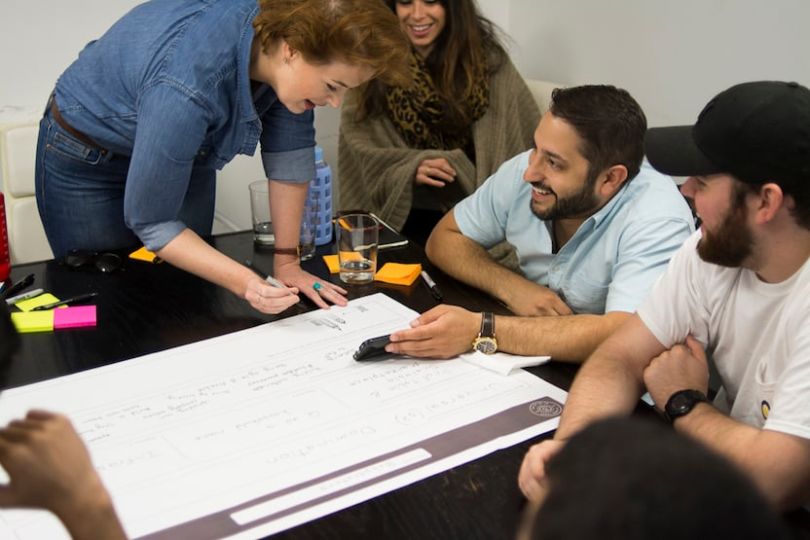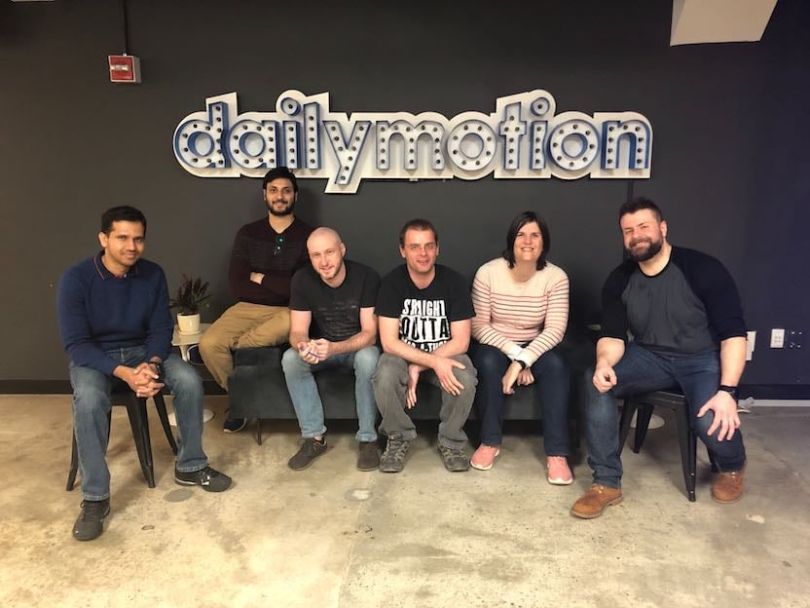Many agree that open communication is crucial to a company’s success, but actually putting it into practice can be a challenge — especially for fast-growing startups. Collaborating with different team members requires time, availability and, for companies with multiple offices, technology.
We talked to leaders at six NYC tech companies for tips on keeping boundaries clear and fostering a collaborative environment.

Edtech company Teachable knows the importance of collaboration. In fact, it’s included in one of the team’s core values. Senior Engineering Manager Newton Ikhariale walked us through the strategies they have in place for fostering open communication.
How does your team ensure they remain collaborative, and avoid “silos” within a team?
We like to develop trust and communication from the start and offer constant feedback, as transparency is a core value at Teachable. When a new hire starts, in addition to having an onboarding buddy/mentor to help get ramped up, they meet one-on-one with each member of the team within the first few weeks.
We also avoid solo projects. Having multiple engineers working on a project prevents the siloing of knowledge and increase our focus on high priority work.
As a leader, what is your personal philosophy on leading a team to be collaborative and creative?
I believe it is important to empower each team member to take ownership of their work and build strong and trusting relationships with teammates. When people are allowed to be their best selves and own their work, they can get more creative in solving challenges to achieve the best results.

Honest Buildings makes it easier for real estate owners to collaborate, so it only makes sense that they would set those same priorities for their internal teams. Chief Brand and Performance Officer Crystal Proenza explained how collaboration is part of the company’s DNA.
How does your team ensure they remain collaborative, and avoid “silos” within a team?
Our culture is firmly based on our values, one of which is camaraderie. From cross-team stand-ups to public, company-facing shout outs, we encourage collaboration. Our internal partnerships push the needle forward to reach extraordinary outcomes. Our objectives and key results (OKRs) are posted for every team to see in our performance management platform. It’s a living, evolving structure, and part of how we level this system up is by accounting for OKR interdependencies between teams and departments.
As a leader, what is your personal philosophy on leading a team to be collaborative and creative?
First and foremost, I want to lead by example. I partner across the organization, formally and informally, and make sure to talk with other departments to create a path toward better outcomes, faster. Our OKR structure and company-facing team goals help us to do that at scale, while company-wide fun events and special celebrations create the time and environment for people to connect, encouraging us to be passionate and caring about each other. That curiosity and interest leads to organic ideation and collaboration.

Office management platform Managed by Q knows a thing or two about keeping communication open across teams and offices. VP of People and Culture Maria Dunn explained that sometimes, it’s the simplest changes that can have the biggest impact on collaboration.
How does your team ensure they remain collaborative, and avoid “silos” within a team?
This may seem like a basic one, however our employee experience team has recently been focusing on seating arrangements in our headquarters. Specifically, making sure that teams are sitting together and facing each other. We’re already seeing an uptick in collaboration and creativity.
We also stress the importance of building personal relationships outside of the day to day. To help with that, each team has a budget to use toward team activities. This could be a dinner out, karaoke (which is very popular here), bowling, etc.
As a leader, what is your personal philosophy on leading a team to be collaborative and creative?
I’m a big advocate for creating and fostering psychological safety. We have something called the “Q Academy,” where any member of our team can present on a topic they are passionate about to the entire company. This initiative speaks to our culture of continuous learning. In that same spirit, we launched a similar, structured program called the “Q Leadership Series.” I kicked it off with an introduction to psychological safety in the workplace. Our team learned why psychological safety is critical to building collaborative and creative teams, along with learning ways to create and foster it.

As Dailymotion goes through a total rebrand, team collaboration is more important than ever. Emilie Laffray, head of data for the company’s adtech solution, explained that the best way of promoting communication is by admitting you can’t always handle everything on your own.
How does your team ensure they remain collaborative, and avoid “silos” within a team?
Agile methodologies like scrum provide the building block upon which you can build a successful team that communicates and collaborates often. It is important to make sure that the different tasks are spread across your team and rotate regularly. It’s about creating a culture where everyone on the team feels empowered to take on any tasks.
This kind of organization helps foster collaboration, as everyone must learn something from somebody else, which can be an ego booster for some, and can break any potential silos.
As a leader, what is your personal philosophy on helping a team to be collaborative and creative?
Admitting that I don’t have all of the answers is an important aspect of my philosophy. Accepting this means that you must rely on your team to come up with a solution. If the team members feel empowered, they will contribute to the end goal. This is an aspect of creativity that can only be achieved by a team that feels they can express themselves in an effective manner. It also becomes motivating to know that you contributed to solving the problem at hand.

Employee performance management solution Centrical has some strategies for managing their own employee performance — specifically in the form of collaboration. CEO Gal Rimon highlighted the ways they keep the lines of communication open.
How does your team ensure they remain collaborative, and avoid “silos” within a team?
For one, we keep communication open by holding weekly meetings with the teams, as well as monthly meetings with the whole company. We also mix team members by department as well as by product — for example, we have a packaged solutions team, a marketing team, a customer expansion team, and more. It also helps for us to send people from one office to the other for a few weeks to work, share ideas and establish connections.
As a leader, what is your personal philosophy on leading a team to be collaborative and creative?
One of our core values is “pursue growth and learning,” which encourages all of us to invest time and effort into our personal growth and learning.

The team at Jackpocket, a mobile platform that makes it easier to play the lottery, prioritizes collaboration and does so by focusing on one common goal: to help the company succeed. Founder and CEO Peter Sullivan talked through all of the ways his team is encouraged to run with creative ideas.
How does your team ensure they remain collaborative, and avoid “silos” within a team?
We just started using Lattice to document individual and team OKRs, so everyone can map back to their goals on a regular basis. The team collectively comes together during our “Friday Wins” catered lunches, where employees show off new designs, product developments or other achievements. And during all-hands meetings, I share things like new hire updates and record sales numbers so that everyone’s in the know when it comes to the health of the business.
Because we’re scaling so fast, we’re also being very thoughtful about how we’re prioritizing culture-building this year, with a calendar that includes in-office team-building activities, such as an employee recognition program that incentivizes peer-to-peer, management-to-report and report-to-management shoutouts, as well as out-of-the-office outdoor activities, and much more.
As a leader, what is your personal philosophy on leading a team to be collaborative and creative?
Give people the opportunity to own their work and they will. Micromanagement doesn’t work. Build a democratic environment in which everyone has a voice and acknowledge the great ideas that come from this collaboration. Then, use all those ideas as data points — some might be right, some might be wrong, but they all still help shape a strategy. Also, because creativity is so important for any organization to thrive, I always encourage people to think outside the box, to constantly question and have open conversations. Ultimately, if everyone feels like an owner (as they actually are) then people will want to work together for the company to succeed.








